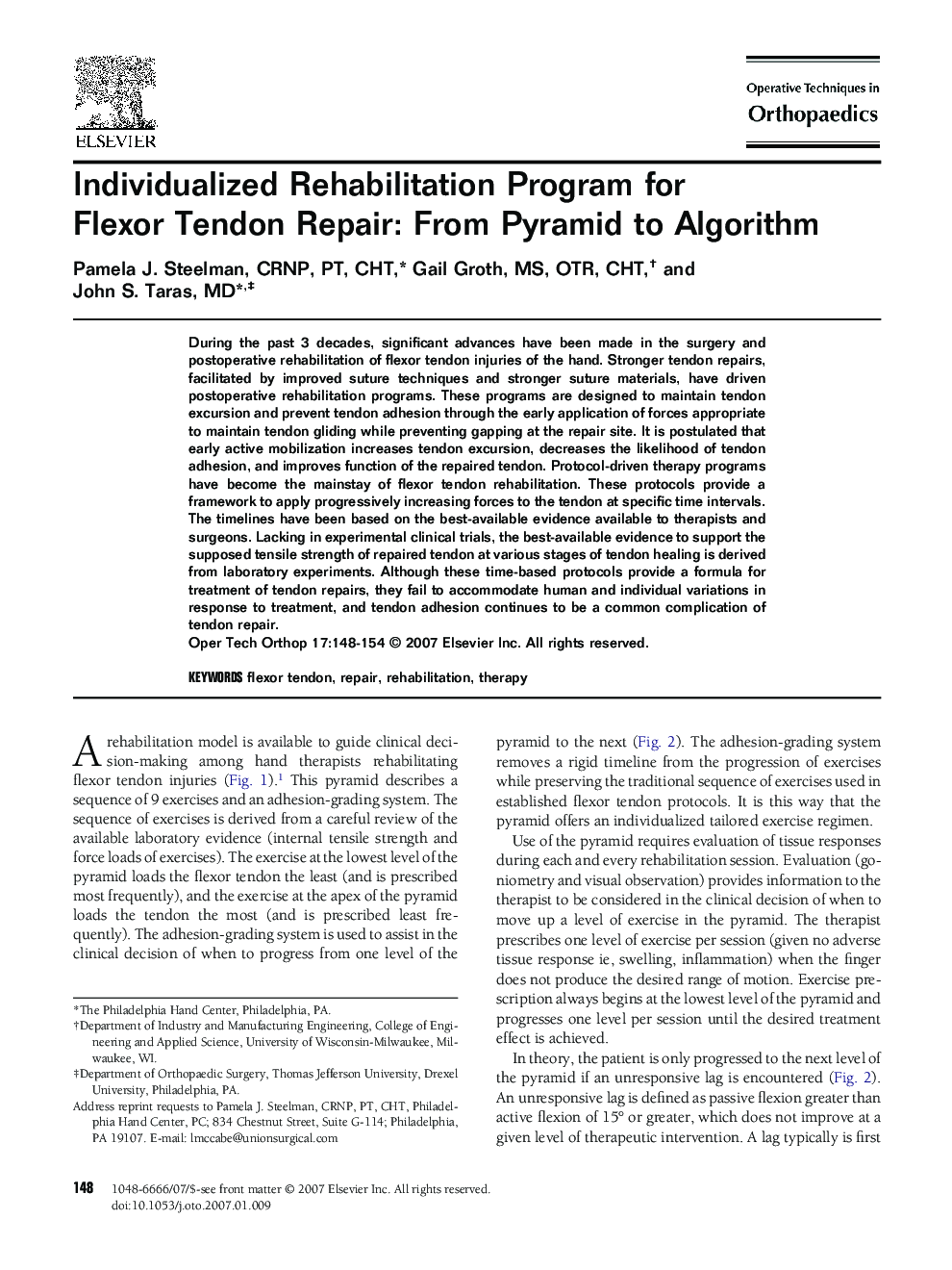| Article ID | Journal | Published Year | Pages | File Type |
|---|---|---|---|---|
| 4079357 | Operative Techniques in Orthopaedics | 2007 | 7 Pages |
During the past 3 decades, significant advances have been made in the surgery and postoperative rehabilitation of flexor tendon injuries of the hand. Stronger tendon repairs, facilitated by improved suture techniques and stronger suture materials, have driven postoperative rehabilitation programs. These programs are designed to maintain tendon excursion and prevent tendon adhesion through the early application of forces appropriate to maintain tendon gliding while preventing gapping at the repair site. It is postulated that early active mobilization increases tendon excursion, decreases the likelihood of tendon adhesion, and improves function of the repaired tendon. Protocol-driven therapy programs have become the mainstay of flexor tendon rehabilitation. These protocols provide a framework to apply progressively increasing forces to the tendon at specific time intervals. The timelines have been based on the best-available evidence available to therapists and surgeons. Lacking in experimental clinical trials, the best-available evidence to support the supposed tensile strength of repaired tendon at various stages of tendon healing is derived from laboratory experiments. Although these time-based protocols provide a formula for treatment of tendon repairs, they fail to accommodate human and individual variations in response to treatment, and tendon adhesion continues to be a common complication of tendon repair.
